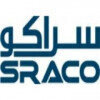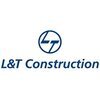Safety Supervisor
300+ Safety Supervisor Interview Questions and Answers


Q. How far is the soil thrown during excavation?
The distance soil is thrown during excavation varies depending on factors such as the type of soil, equipment used, and excavation method.
The distance soil is thrown during excavation can range from a few feet to several yards.
Factors that affect the distance include the type of soil (e.g., sandy soil may be thrown farther than clay soil), the equipment used (e.g., excavators can throw soil farther than shovels), and the excavation method (e.g., mechanical excavation may thro...read more
Q. What is confined space, what is the difference between Accident and incidents .
Confined space is an area with limited entry and exit points, while accidents are unplanned events and incidents are near-misses.
Confined spaces have limited ventilation and can pose a risk to workers.
Examples of confined spaces include tanks, silos, and sewers.
Accidents are unplanned events that result in injury, damage, or loss.
Incidents are near-misses that could have resulted in an accident.
Both accidents and incidents should be reported and investigated to prevent future...read more

Asked in SABIC

Q. How can we determine if scaffolding is suitable for heavy or light loads?
The load capacity of a scaffold can be determined by its design and specifications.
Check the manufacturer's specifications for the scaffold
Consider the weight of the materials and equipment that will be placed on the scaffold
Ensure that the scaffold is designed and constructed to meet the load requirements
Consult with a qualified engineer or scaffold designer if necessary

Asked in Nem Engineering Projects

Q. What is the difference between an unsafe action and an unsafe condition?
Unsafe action refers to the behavior or action of an individual that poses a risk to safety, while unsafe condition refers to the physical state or environment that can cause harm or injury.
Unsafe action: It involves the actions or behaviors of individuals that can lead to accidents or injuries. For example, not wearing personal protective equipment (PPE), operating machinery without proper training, or disregarding safety procedures.
Unsafe condition: It refers to the physica...read more

Asked in UltraTech Cement

Q. What do you know about lifting activities & tell us before lifting what you ll check. And also described about luffing or fly jib differences.
Lifting activities require careful planning and checks to ensure safety and efficiency, including understanding equipment types.
Conduct a risk assessment to identify potential hazards before lifting.
Check the weight of the load to ensure it is within the equipment's capacity.
Inspect lifting equipment (e.g., cranes, slings) for any signs of wear or damage.
Ensure the lifting area is clear of obstructions and personnel.
Verify that all personnel involved are trained and aware of ...read more

Asked in Larsen & Toubro Limited

Q. What is TBT, what is a hazards, its possible all hazard finished in site, what is PPE, how many type of audit , how many types of permit.
TBT stands for Toolbox Talk, hazards are potential dangers on site, PPE is Personal Protective Equipment, audits and permits are important for safety compliance.
TBT (Toolbox Talk) is a short safety meeting or discussion held with workers before starting work.
Hazards are potential sources of harm or danger on site, such as slippery floors, exposed wires, or heavy machinery.
PPE (Personal Protective Equipment) includes items like helmets, gloves, and safety goggles to protect wo...read more
Safety Supervisor Jobs




Asked in UltraTech Cement

Q. If you find a damaged sling, what will you do?
I will immediately remove the sling from service and tag it as damaged.
Inspect the sling thoroughly to determine the extent of the damage.
Remove the sling from service and tag it as damaged.
Notify the appropriate personnel to replace the damaged sling.
Ensure that all employees are aware of the damaged sling and the importance of reporting any damage they observe.

Asked in Mahindra Susten

Q. What is work permit? Hot work hazard,hazard impact, control measures
A work permit is a document that authorizes a worker to perform a specific job in a controlled manner.
Hot work hazard refers to any work that involves open flames, sparks, or high temperatures.
Hazard impact can include fire, explosions, burns, and damage to equipment or property.
Control measures include proper training, use of personal protective equipment, fire extinguishers, and ensuring proper ventilation.
Examples of work that require a work permit include welding, cutting...read more
Share interview questions and help millions of jobseekers 🌟


Asked in Sraco

Q. What is NFPA? What is fire traingle? What is currently lor code in NFPA?
NFPA stands for National Fire Protection Association. Fire triangle consists of fuel, heat, and oxygen. Current lor code in NFPA is NFPA 101.
NFPA stands for National Fire Protection Association
Fire triangle consists of fuel, heat, and oxygen
Current lor code in NFPA is NFPA 101

Asked in TRL Krosaki Refractories

Q. What is a 6-Directional hazard and how do you identify it?
6-Directional hazard refers to potential dangers that can come from any direction. Observations can be made by conducting thorough site inspections and risk assessments.
Identify all possible hazards that can come from different directions such as falling objects, moving equipment, or hazardous materials.
Conduct regular site inspections to identify any new hazards or changes in existing hazards.
Perform risk assessments to evaluate the likelihood and severity of each hazard.
Imp...read more

Asked in Bechtel

Q. What is the LOTO system?
LOTO system stands for Lockout/Tagout system, which is a safety procedure used to ensure that dangerous machines are properly shut off and not started up again until maintenance or repairs are completed.
LOTO system is used to control hazardous energy sources during maintenance or repair work.
It involves locking and tagging the energy-isolating devices to prevent accidental startup.
The system helps protect workers from hazardous energy releases and potential injuries.
It is ess...read more

Asked in Amara Raja Energy & Mobility

Q. 1 How to clean work product ? 1 How to quality products ?
To clean work product, use appropriate cleaning agents and follow safety guidelines.
Identify the type of work product and the appropriate cleaning agent for it.
Follow safety guidelines and wear appropriate personal protective equipment.
Clean the work product thoroughly and allow it to dry completely before use.
Regularly inspect and maintain cleaning equipment to ensure effectiveness.
Train employees on proper cleaning procedures and provide necessary resources.
Examples: Use so...read more

Asked in Tata Steel

Q. How was the molding material prepared in a three-part mold box?
Moulding material preparation in a 3-type mold box involves carefully measuring and mixing the materials before pouring them into the mold.
Measure out the required amounts of moulding material components, such as resin and hardener.
Mix the components thoroughly according to the manufacturer's instructions to ensure proper curing.
Pour the mixed material into the mold box, making sure to eliminate any air bubbles for a smooth finish.
Allow the material to cure completely before ...read more

Asked in SABIC

Q. Tell me the parts of scaffolding.. What is the purpose of cross bracing..
Scaffolding parts include standards, ledgers, transoms, and cross braces. Cross bracing provides lateral stability to the scaffold.
Scaffolding parts: standards, ledgers, transoms, and cross braces
Cross bracing prevents lateral movement of the scaffold
Cross braces should be installed diagonally in both directions for maximum stability

Asked in Tata Motors

Q. What is lifting, and what precautions should be taken before starting lifting work?
Lifting involves raising or moving objects, requiring safety measures to prevent injury and ensure proper technique.
Assess the load: Ensure it is within your lifting capacity. For example, avoid lifting heavy machinery alone.
Plan the lift: Identify the path and remove obstacles. For instance, clear a walkway before moving boxes.
Use proper techniques: Bend at the knees, keep the load close to your body, and lift with your legs.
Wear appropriate gear: Use gloves and steel-toed b...read more

Asked in Faber Sindoori Management Services

Q. Hoe do you investigate accident and incident. And how do you report
Accidents and incidents are investigated thoroughly by gathering information, analyzing root causes, and documenting findings in a detailed report.
Gather information from witnesses, CCTV footage, and relevant documentation
Analyze root causes using techniques like root cause analysis or fishbone diagram
Document findings in a detailed report including timeline of events, contributing factors, and recommendations for prevention
Ensure all findings are communicated to relevant sta...read more

Asked in UltraTech Cement

Q. What is scaffold? How many types of it & generally which type of scaffold uses at site
Scaffolds are temporary structures used to support workers and materials during construction or maintenance activities.
Types of scaffolds include: supported, suspended, rolling, and modular.
Supported scaffolds are the most common, built from platforms supported by poles or frames.
Suspended scaffolds are used for work on tall buildings, hanging from a roof or other structure.
Rolling scaffolds are mobile and can be moved easily around a site.
Modular scaffolds are pre-fabricated...read more
Asked in I Controls and Systems

Q. What is rccb elcb, what is safety near-miss what is accident, what is PTW etc
RCCB ELCB are electrical safety devices. Near-miss is a potential accident. Accident is an unplanned event. PTW is permit to work.
RCCB (Residual Current Circuit Breaker) and ELCB (Earth Leakage Circuit Breaker) are electrical safety devices that protect against electric shock.
Near-miss is a potential accident that did not result in injury or damage but had the potential to do so.
Accident is an unplanned event that results in injury, damage, or loss.
PTW (Permit to Work) is a f...read more

Asked in Nagarjuna Construction Company

Q. What actions would you take if someone fell from a height, was bleeding, and you were present at that moment?
In case of a fall from height with bleeding, immediate first aid and emergency response are crucial for the victim's safety.
Assess the scene for safety before approaching the victim.
Call for emergency medical assistance immediately.
Check the victim's responsiveness and breathing.
Apply direct pressure to the bleeding area using a clean cloth or bandage.
If the bleeding is severe, elevate the injured area above the heart if possible.
Monitor the victim's condition until help arri...read more

Asked in Tata Steel

Q. What is the name of train connect in to highvoltage wair.
The name of the train connect in to high voltage wire is called a pantograph.
Pantographs are devices mounted on the roof of a train that make contact with overhead wires to draw power for the train's operation.
They are commonly used in electric trains and trams.
Pantographs are designed to maintain a constant contact with the overhead wires while the train is in motion.
Examples of trains using pantographs include high-speed trains like the Shinkansen in Japan and the Eurostar ...read more

Asked in e-Procurement Technologies

Q. Can the YFZ450R Crankshaft Position Sensor be used in the Raptor 350?
The YFZ450R crankshaft position sensor is not compatible with the Raptor 350 due to design differences.
The YFZ450R and Raptor 350 have different engine designs and specifications.
The crankshaft position sensor is calibrated specifically for each engine's timing and performance.
Using an incompatible sensor can lead to engine misfires or failure to start.
Always refer to the manufacturer's specifications for parts compatibility.

Asked in e-Procurement Technologies

Q. Is it possible to do an EFI conversion in a Raptor 350?
Yes, EFI conversion is possible for a Raptor 350, enhancing performance and fuel efficiency.
EFI (Electronic Fuel Injection) improves fuel atomization and combustion efficiency.
Aftermarket kits are available specifically for Raptor 350 models.
Installation may require modifications to the intake and exhaust systems.
Examples of EFI kits include those from brands like Dynojet or V-Force.
Consulting with a professional mechanic is recommended for proper installation.

Asked in Tata Motors

Q. What are the types of gases involved in the internal and detection processes?
Various gases are monitored for safety, including toxic, flammable, and asphyxiant gases in industrial settings.
Toxic gases: Carbon monoxide (CO), hydrogen sulfide (H2S), and ammonia (NH3) can pose serious health risks.
Flammable gases: Methane (CH4) and propane (C3H8) are monitored to prevent explosions.
Asphyxiant gases: Nitrogen (N2) and carbon dioxide (CO2) can displace oxygen and lead to suffocation.
Detection methods: Gas detectors, sensors, and alarms are used to identify...read more

Asked in Tata Motors

Q. What is the inspection process for the tunnel and surface before starting work?
A thorough inspection process ensures safety and compliance before work begins in tunnels and on the surface.
Conduct a pre-work safety briefing to outline potential hazards.
Inspect tunnel ventilation systems to ensure adequate airflow.
Check for structural integrity of tunnel walls and ceilings, looking for cracks or signs of wear.
Examine surface conditions for any obstructions or hazards, such as loose debris or water accumulation.
Verify that all safety equipment, such as hel...read more

Asked in Hindustan Construction Company

Q. What are the key aspects of road safety?
Key aspects of road safety include obeying traffic laws, maintaining vehicle condition, and promoting awareness among drivers and pedestrians.
Obey traffic signals and signs to prevent accidents, e.g., stopping at red lights.
Maintain a safe following distance to allow for sudden stops, e.g., keeping at least three seconds behind the vehicle ahead.
Avoid distractions while driving, such as using a mobile phone or eating.
Ensure your vehicle is in good condition, including brakes,...read more

Asked in Talwandi Sabo Power

Q. What is scaffolding, and what are the different types of scaffolding?
Scaffolding is a temporary structure used to support workers and materials during construction or maintenance work.
Types of scaffolds include suspended, supported, rolling, and aerial lifts.
Scaffolds must be designed and erected by a competent person and inspected regularly.
Workers must be trained on proper use and safety measures when working on scaffolds.
Common hazards associated with scaffolds include falls, electrocution, and falling objects.

Asked in Tata Steel

Q. Where is security needed?
Security is needed in various areas to ensure the safety of people, property, and information.
Security is needed in public places such as airports, train stations, and shopping malls to prevent terrorist attacks or criminal activities.
Security is needed in workplaces to protect employees from potential hazards and ensure compliance with safety regulations.
Security is needed in residential areas to deter burglaries and protect residents from intruders.
Security is needed in cyb...read more

Asked in UltraTech Cement

Q. Who is responsible for Housekeeping/Cleanliness at the workplace?
All employees are responsible for housekeeping/cleanliness at workplace.
Maintaining cleanliness and orderliness is a shared responsibility among all employees.
Employees should clean up after themselves and report any hazards or spills immediately.
Regular cleaning schedules should be established and followed.
Supervisors should ensure that employees are trained on proper cleaning procedures.
A clean and organized workplace promotes safety and productivity.
Asked in Sharma & Associates Firetech

Q. How do you perform a risk assessment for a construction site?
Performing a risk assessment for a construction site involves identifying potential hazards and evaluating the likelihood and severity of accidents.
Identify potential hazards such as falls, electrical hazards, hazardous materials, and equipment malfunctions.
Evaluate the likelihood of accidents by considering factors like frequency of exposure, number of workers involved, and control measures in place.
Assess the severity of accidents by examining potential injuries, property d...read more
Asked in Kina Engineering & Contractors

Q. How many types of fire extinguishers are there?
There are five main types of fire extinguishers: water, foam, powder, CO2, and wet chemical.
Water fire extinguishers are used for Class A fires involving solid materials like wood or paper.
Foam fire extinguishers are suitable for Class A and B fires, which involve flammable liquids like gasoline or oil.
Powder fire extinguishers are versatile and can be used for Class A, B, and C fires, which involve flammable gases.
CO2 fire extinguishers are effective for Class B and electric...read more
Interview Questions of Similar Designations
Interview Experiences of Popular Companies








Reviews
Interviews
Salaries
Users

















